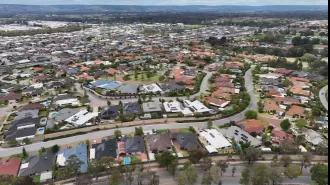Having poor credit means your credit score is low, making it difficult to access credit or get lower interest rates.
Scores below 670 are considered fair, and below 580-600 is poor. Anything below 500 is very poor and limits financing options. Generally, scores below 580 are bad credit. Depending on lender, 700-740+ scores qualify for best business loans.
July 26th 2023.

What is a Bad Credit Score?
When it comes to credit scores, there is no clear distinguishing line between a good credit score and a bad credit score, also known as a subprime credit score. Most people, however, consider scores in the fair to poor range to signal “bad credit”. The lower your credit score is, the worse your credit.
The two primary credit scoring models are FICO® credit scores and VantageScores®. Both are on a credit score range of 300-850, however, there are different breakdowns of score ranges for each one. For FICO, scores of 800-850 are considered exceptional, 740-799 very good, 670-739 good, 580-669 fair, and 300-579 poor. VantageScores range from 781-850 as excellent, 661-780 as good, 601-660 as fair, 500-600 as poor, and 300-499 as very poor.
Keep in mind that lenders maintain their own credit score ranges, and over 90% of lenders use FICO scores. So, a bad VantageScore credit score can still cause credit denials. Generally, credit scores below 600 are considered bad credit and below 500 is considered bad to very bad.
What Credit Report Factors Cause Bad Credit?
Credit reports contain your credit history and list your credit accounts, such as credit card balances, how many credit cards you have, auto loans, and more. The three major credit bureaus, Experian, Equifax, and TransUnion, generate credit reports, which are then shared with credit card issuers, lenders, insurance companies, banks, and even employers when authorized.
These bureaus use the information in your report to calculate credit scores, and most credit activity is categorized into one of five key factors. For FICO scores, these are payment history (35%), amounts owed (30%), length of credit history (15%), credit mix (10%), and new credit (10%).
How Does Bad Credit Impact Me?
Having bad or no credit can create a lot of financial problems, especially when applying for loans. The most significant risks are denials, high interest rates and fees, additional loan requirements, fewer credit card perks and rewards, higher insurance rates, rental denials and higher security deposits, and utility company deposits.
How Can I Improve Bad Credit?
Fortunately, bad credit is not permanent. It takes time and patience to improve your credit score, but it is possible. The best way to start is to build good credit habits, such as paying bills on time, keeping credit card balances low, and not opening too many new accounts. Additionally, looking into credit repair services can be a great way to get back on track.
What is a Bad Credit Score?
When it comes to credit scores, there is no single dividing line between a good credit score and a bad credit score, which is also referred to as a subprime credit score. Generally, scores in the fair to poor range are considered to signal "bad credit." The lower your credit score, the worse your credit. The higher end of fair credit scores may not be considered bad credit.
The two main credit scoring models are FICO® credit scores and VantageScores®. Both models have a range of 300-850. However, each model has its own breakdown of score ranges. FICO scores range from 800-850 (exceptional) to 740-799 (very good) to 670-739 (good) to 580-669 (fair) to 300-579 (poor). VantageScores range from 781-850 (excellent) to 661-780 (good) to 601-660 (fair) to 500-600 (poor) to 300-499 (very poor). Keep in mind that lenders may have their own credit score ranges which could differ from these. Furthermore, over 90% of lenders use FICO scores.
What Credit Report Factors Cause Bad Credit?
Your credit reports contain your credit history, which lists all of your credit accounts, including credit card balances, how many credit cards you have, auto loans, how many loans you have or had, current balances for revolving credit or installment loans, available credit, credit limits, and recent credit applications. The three major credit bureaus, Experian, Equifax, and TransUnion, generate credit reports. Credit activity is usually categorized into five key factors which are weighed differently and determine your credit score. These factors are payment history (35%), amounts owed (30%), length of credit history (15%), credit mix (10%), and new credit (10%).
How Does Bad Credit Impact Me?
Having bad or no credit can create major financial hurdles, especially when applying for personal or business loans. Some of the risks of a poor credit score include denials, higher interest rates and fees, additional loan requirements, fewer credit card perks and rewards, higher insurance rates, rental denials and higher security deposits, and utility company deposits.
How Can I Improve Bad Credit?
Fortunately, bad credit is not permanent and it is possible to improve your credit scores. To do so, it is best to adopt certain credit habits, such as paying bills on time, reducing credit card debt, not closing old accounts, and avoiding opening too many new accounts. With these habits, you can work your way towards repairing your credit score, increasing your chances of being approved for loans and other financing options.
When it comes to credit scores, there is no clear distinguishing line between a good credit score and a bad credit score, also known as a subprime credit score. Most people, however, consider scores in the fair to poor range to signal “bad credit”. The lower your credit score is, the worse your credit.
The two primary credit scoring models are FICO® credit scores and VantageScores®. Both are on a credit score range of 300-850, however, there are different breakdowns of score ranges for each one. For FICO, scores of 800-850 are considered exceptional, 740-799 very good, 670-739 good, 580-669 fair, and 300-579 poor. VantageScores range from 781-850 as excellent, 661-780 as good, 601-660 as fair, 500-600 as poor, and 300-499 as very poor.
Keep in mind that lenders maintain their own credit score ranges, and over 90% of lenders use FICO scores. So, a bad VantageScore credit score can still cause credit denials. Generally, credit scores below 600 are considered bad credit and below 500 is considered bad to very bad.
What Credit Report Factors Cause Bad Credit?
Credit reports contain your credit history and list your credit accounts, such as credit card balances, how many credit cards you have, auto loans, and more. The three major credit bureaus, Experian, Equifax, and TransUnion, generate credit reports, which are then shared with credit card issuers, lenders, insurance companies, banks, and even employers when authorized.
These bureaus use the information in your report to calculate credit scores, and most credit activity is categorized into one of five key factors. For FICO scores, these are payment history (35%), amounts owed (30%), length of credit history (15%), credit mix (10%), and new credit (10%).
How Does Bad Credit Impact Me?
Having bad or no credit can create a lot of financial problems, especially when applying for loans. The most significant risks are denials, high interest rates and fees, additional loan requirements, fewer credit card perks and rewards, higher insurance rates, rental denials and higher security deposits, and utility company deposits.
How Can I Improve Bad Credit?
Fortunately, bad credit is not permanent. It takes time and patience to improve your credit score, but it is possible. The best way to start is to build good credit habits, such as paying bills on time, keeping credit card balances low, and not opening too many new accounts. Additionally, looking into credit repair services can be a great way to get back on track.
What is a Bad Credit Score?
When it comes to credit scores, there is no single dividing line between a good credit score and a bad credit score, which is also referred to as a subprime credit score. Generally, scores in the fair to poor range are considered to signal "bad credit." The lower your credit score, the worse your credit. The higher end of fair credit scores may not be considered bad credit.
The two main credit scoring models are FICO® credit scores and VantageScores®. Both models have a range of 300-850. However, each model has its own breakdown of score ranges. FICO scores range from 800-850 (exceptional) to 740-799 (very good) to 670-739 (good) to 580-669 (fair) to 300-579 (poor). VantageScores range from 781-850 (excellent) to 661-780 (good) to 601-660 (fair) to 500-600 (poor) to 300-499 (very poor). Keep in mind that lenders may have their own credit score ranges which could differ from these. Furthermore, over 90% of lenders use FICO scores.
What Credit Report Factors Cause Bad Credit?
Your credit reports contain your credit history, which lists all of your credit accounts, including credit card balances, how many credit cards you have, auto loans, how many loans you have or had, current balances for revolving credit or installment loans, available credit, credit limits, and recent credit applications. The three major credit bureaus, Experian, Equifax, and TransUnion, generate credit reports. Credit activity is usually categorized into five key factors which are weighed differently and determine your credit score. These factors are payment history (35%), amounts owed (30%), length of credit history (15%), credit mix (10%), and new credit (10%).
How Does Bad Credit Impact Me?
Having bad or no credit can create major financial hurdles, especially when applying for personal or business loans. Some of the risks of a poor credit score include denials, higher interest rates and fees, additional loan requirements, fewer credit card perks and rewards, higher insurance rates, rental denials and higher security deposits, and utility company deposits.
How Can I Improve Bad Credit?
Fortunately, bad credit is not permanent and it is possible to improve your credit scores. To do so, it is best to adopt certain credit habits, such as paying bills on time, reducing credit card debt, not closing old accounts, and avoiding opening too many new accounts. With these habits, you can work your way towards repairing your credit score, increasing your chances of being approved for loans and other financing options.
[This article has been trending online recently and has been generated with AI. Your feed is customized.]
[Generative AI is experimental.]
0
0
Submit Comment





